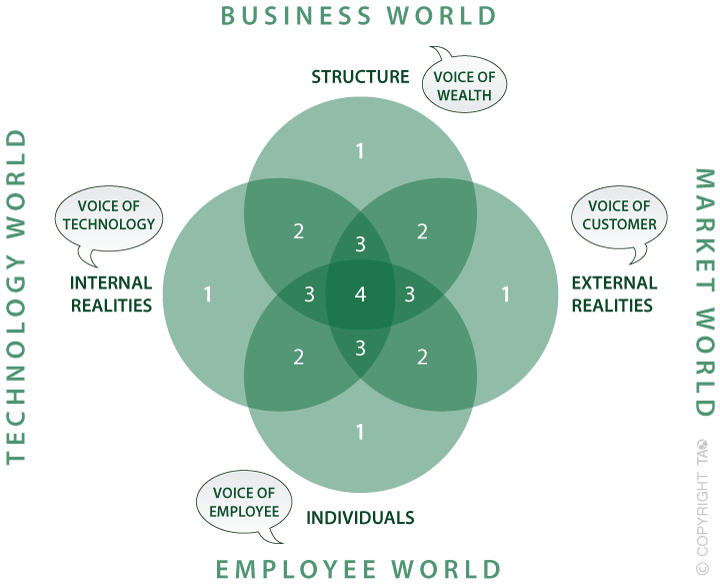Imagine planning a trip to a place you’ve never been to, but without looking at a map or checking directions. Sure, you would get there, but you’d face a few problems along the way. Most times, we set goals without fully understanding what we need to make them happen. We have a general idea, but as they say, the devil is in the details. And when you’re running a business, the details make the difference between profit and loss.
Think of the Business Aligner Model as your personal business roadmap. It shows you where you are with regard to your investors, your market, your employees and the technology available to you. It also helps you plot where you would like to take your business and pinpoint the actions that will get you there.
We have found it to be an incredibly useful diagnostic tool for any business. We have worked with start-ups and family owned businesses, small-scale and large-scale organizations and time and again, the Business Aligner model has helped pave the way for significant growth.

Here is a general idea of how it works.
Initially, we look at all the different perspectives that inform a business. We like to call them Voices, and we have identified four fundamental Voices.
Voice of Wealth – representing the investors, stakeholders, top management or Board of Directors.
Voice of Customer – representing the customer and the market.
Voice of Employee – referring to the workforce within the organization.
Vector of Technology – referring to the infrastructure environment of your organization.
These four voices intersect at four zones. Following a series of questions, we help you plot where your organization currently stands and then create a roadmap for the future.
Zone 4 – shows you the current state of the organization. It indicates what your current actions are and gives you a bird’s eye view of how your organization is interacting with the different voices. Perhaps you’re meeting customer requirements but not making enough profit. Maybe you have outdated technology that is interfering with your production and delivery process. This brings us to Zone 3.
Zone 3 – identifies the problems that you might be encountering. And as Robert Kiyosaki wisely put it, “Inside of every problem lies an opportunity.” Problems are our companions on the path to success; they give us the opportunity to learn and develop new thoughts and processes to help us on our way. This is the magic of Zone 2.
Zone 2 – helps us work on our Innovation potential. In order to fix a problem, we need to think differently. We need to discover a new way of working, of looking at a situation. It gives us the opportunity to strategize and think in a larger perspective than what we have previously been used to. And this is where we enter Zone 1.
Zone 1 – is the Dream zone. It holds the unaccessed potential of all Voices, the dreams held by investors, customers and employees that have not been realized yet. Maybe your organization started out by making clothes, but your larger dream is to produce organic, free-trade, cotton-based products, made in an equitable and eco-friendly environment, available across the country at affordable prices.
Now that you’ve got a general idea of the model, here is how we implement it.
Step 1: We look at the current reality of the organization with regard to the four Voices.
Step 2: We analyse the interactions and relationships between these different Voices and the organization.
Step 3: We map out the opportunities that already exist to help us meet our business performance goals.
Step 4: We map out our future desired state and make a detailed plan with definitive timeline as to how we make that a reality.
It’s an exciting journey that will take you to places you may only have dreamed of. We’d like to help you make that a reality.

